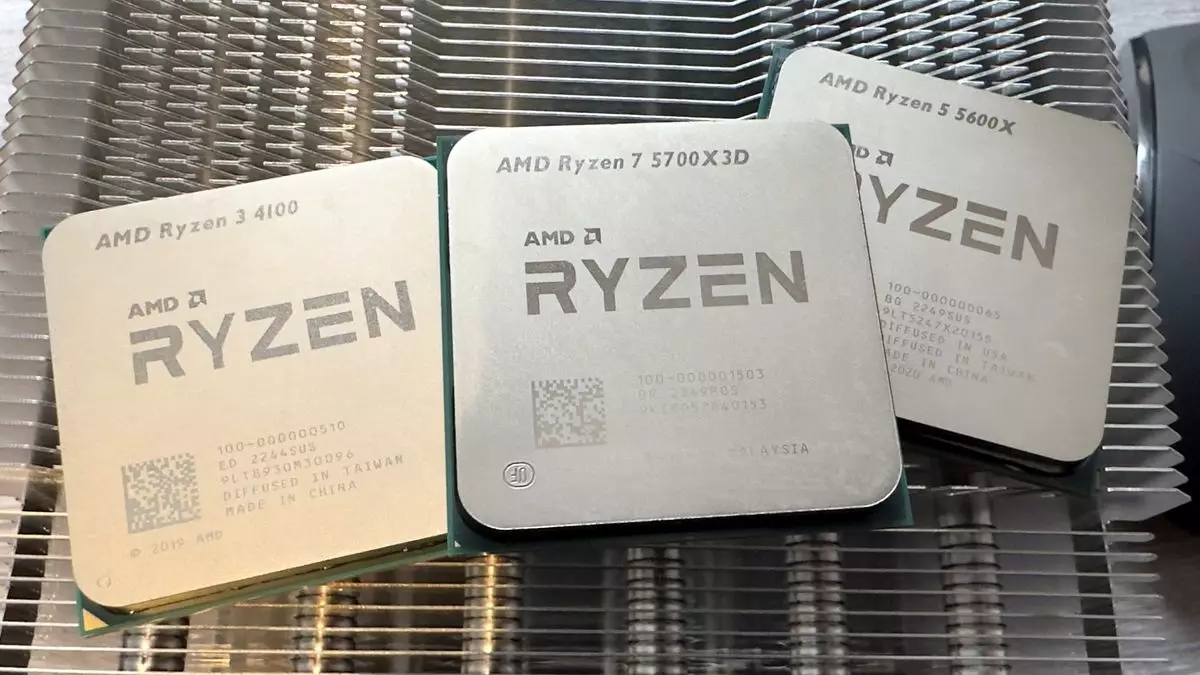AMD has indeed made significant strides in the CPU market, particularly with its recent launch of the AM5 platform, significant advancements embodied in the Ryzen 9000-series processors. However, the continued development of new CPUs for the AM4 platform serves a strategic purpose that should not be overlooked. As AMD looks to extend the life cycle of the AM4 socket, the impending release of the Ryzen 5 5600T and 5600XT signifies both a capitalizing on existing technology and a way to appeal to budget-conscious consumers.
The AM4 platform has been a nostalgic staple for PC builders over several generations. Its longevity is a testament to the versatility of AMD’s architecture. With the Ryzen 5000-series processors demonstrating impressive performance, the announcement of two new entries in this lineup reinforces AMD’s commitment to serve enthusiasts and budget builders alike. This ongoing support is particularly vital as consumers seek cost-effective upgrades without sacrificing performance. The emergence of the 5600T and 5600XT adds fresh excitement in a market that yearns for competitive pricing and capable processors.
AMD’s release strategy indicates an understanding of its consumer base. With mentions of the Ryzen 5 5600T appearing across motherboard manufacturer websites, the anticipation is palpable. Notably, the mention of former limited editions such as the Ryzen 5 5600X3D highlights AMD’s ongoing efforts to create variations that will appeal specifically to different segments of its audience.
The ‘T’ and ‘XT’ suffixes in AMD’s processor lineup warrant a closer look. Initially intended to denote low-power variants, these suffixes have evolved in meaning. The Ryzen 5900XT, for instance, delivers more processing cores while maintaining the same thermal design power (TDP) as its predecessors. This shift in branding prompts questions about the motivations behind the refreshes. Are these simply rebranded products meant to satiate consumers’ hunger for upgrades, or do they signal AMD’s response to growing competition?
The anticipated specifications for the 5600T and 5600XT suggest that slight modifications, such as 100 MHz increases in base clock speeds, are underway. While these numbers may seem trivial, when paired with enhanced boost clock capabilities, they can yield noticeable performance gains—especially in gaming scenarios. Given AMD’s history with boost clocks in refreshed series, including the success seen with the 5800XT, the potential is there for these new models to carve out a significant market niche.
The release of the 5600T and 5600XT offers promise for prospective PC builders operating on a budget. If AMD successfully reduces the price points while improving specifications, this could translate into a compelling option for those upgrading from older AM4 processors. The ramifications of this could ripple through the market, pushing prices for existing Ryzen 5000-series models downward as well.
Consider, for instance, the impact of a hypothetical price drop of 10-15 dollars on the current market for the Ryzen 5 5600X, coupled with improved clock speeds. This would not only attract more budget-sensitive gamers but also potentially empower gamers still clinging to older generations of CPUs. In such a scenario, AMD’s approach would effectively broaden the availability of high-performance processors to a wider audience.
As excitement builds around potential updates to the AMD Ryzen 5000-series, the overarching question remains: What role will AMD assign to the AM4 platform moving forward? The strategic release of CPUs like the Ryzen 5600T and 5600XT indicates a thoughtful and deliberate approach, one that values consumer feedback and market conditions.
Ultimately, while much of this remains speculative until official announcements are made, the future appears promising. AMD’s apparent commitment to refreshing its AM4 offerings speaks volumes about its dedication to meet the varied needs of its user base and maintain its competitive edge in a rapidly evolving technological landscape. In a market where performance can rapidly shift, staying adaptable could be the cornerstone of AMD’s strategy moving forward. As we await further details, the anticipation serves as a reminder that each iterative step plays a critical role in shaping the future of PC building.

